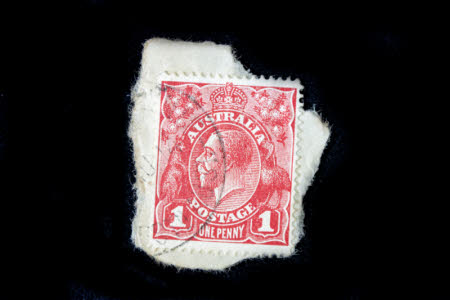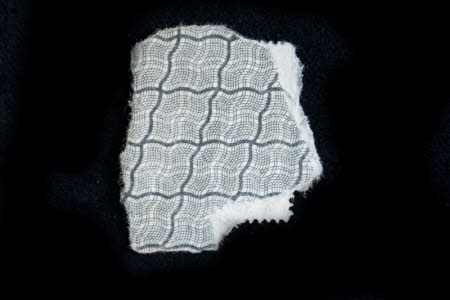Stamp
Category
Ephemera
Date
Unknown
Materials
paper, ink, glue
Measurements
35 x 31 mm
Order this imageCollection
Mr Straw's House, Nottinghamshire
NT 748711.3
Caption
The six self-governing Australian colonies that formed the Commonwealth of Australia on 1 January 1901 operated their own postal service and issued their own stamps. Section 51(v) of the Australian Constitution empowered the Commonwealth to make laws in respect of “postal, telegraphic, telephonic, and other like services”. The Commonwealth created the Postmaster-General's Department on 1 March 1901, which took over all the colonial mail systems and the then-current colony stamps. These stamps continued to be valid and some continued to be used even following the introduction in 1913 of the Commonwealth's uniform postage stamp series. These stamps continued to be valid for postage until 14 February 1966 when the introduction of decimal currency made all stamps bearing the earlier currency invalid for use. Circumstances precluded the immediate issue of a uniform Commonwealth postage stamp. But there was no hindrance in respect to a Postage Due series. The first of these, the design of which was based on the current New South Wales postage due stamps, was issued in July 1902. Postal rates became uniform between the new states on 1 May 1911 because of the extension of the United Kingdom domestic postal rate of 1d per half ounce (Imperial Penny Post) to Australia as a member of the British Empire. One penny postcards and lettercards also appeared in 1911. In the same year, the Postmaster-General's Department held a stamp design competition for a uniform series of Commonwealth postage stamps. This competition attracted over one thousand entries. George V (George Frederick Ernest Albert; 3 June 1865 – 20 January 1936) was King of the United Kingdom and the British Dominions, and Emperor of India, from 6 May 1910 until his death in 1936. He was the second son of Albert Edward, Prince of Wales (later King Edward VII), and the grandson of the reigning British monarch, Queen Victoria. From the time of his birth, he was third in the line of succession behind his father and his elder brother, Prince Albert Victor, Duke of Clarence and Avondale. From 1877 to 1891, George served in the Royal Navy, until the unexpected death of his elder brother in early 1892 put him directly in line for the throne. On the death of his grandmother in 1901, George's father became King-Emperor of the British Empire, and George was created Prince of Wales. He succeeded his father in 1910. He was the only Emperor of India to be present at his own Delhi Durbar.
Summary
Postage stamp - red printed stamp at the top is printed 'AUSTRALIA' above the image of Australian King George V below which is printed 'POSTAGE 1 ONE PENNY 1'. The stamp is attached to part of an envelope buff on the front side with a grey and white check pattern to the back. The stamp is loose in the album between pages '4' and '5'. The stamp is kept in 'THE WORLD POSTAGE STAMP ALBUM' with blue book boards and two world globes front centre in black and white surrounded by a series of world stamp images. On the back in the centre printed in black are two crossed flags depicting the British flag above a globe. The album contains a hundred and forty five pages, plus an additional page added at the rear of 'United South Africa' taken from another album (record 748711.1).
Provenance
Straw collection bequeathed to The National Trust on the death in 1990 of William Straw.

